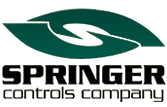What is Intrinsically Safe Equipment? What’s the difference between intrinsically safe vs explosion proof? When using equipment in hazardous environments there are several ways to make the equipment safe to operate. One method is to make the equipment “intrinsically safe”. This means the equipment is designed so that both thermal and electrical energy is limited… Read more »
Industrial Automation and Control News
Hazardous Environment Classifications: NEC vs IEC
When working in or specifying equipment for use in hazardous environments, we see a lot of confusion in the industry regarding the different certifications and requirements. Many people have heard terms like Class I, Division 2, Group E, or ATEX zone 21 but many of our customers only know what certification they require with little… Read more »
New Cable Transducer to Measure Linear Position
Cable transducers, sometimes called “string pots”, are used to measure linear position by using a flexible cable and a spring-loaded spool. The end of the cable is attached to the moving object, and the base is fixed. As the cable is pulled from the spool, a position sensor tracks the revolutions on the shaft of… Read more »
What is a Slip Ring and What Do They Do?
What is a slip ring? A slip ring is a method to make an electrical connection from a stationary object to a rotating assembly. These are used in many industrial automation applications and for equipment like tower and jib cranes, as well as cable and hose winders, where a portion can spin freely, while the… Read more »
New Mike-D Pendant for Direct Control
Springer Controls in collaboration with TER is pleased to announce the new Mike-D pendant control for direct control of industrial machines. Similar in design and feel of the already popular Mike pendant, the Mike-D has microswitches rated for a whopping 10Amps current, according to IEC unitization categories AC3 and AC4, which allows many motors and… Read more »
